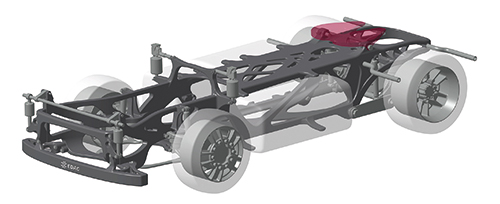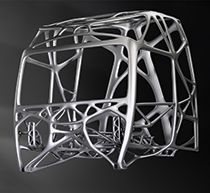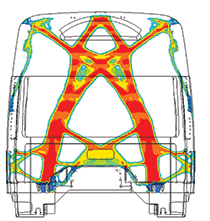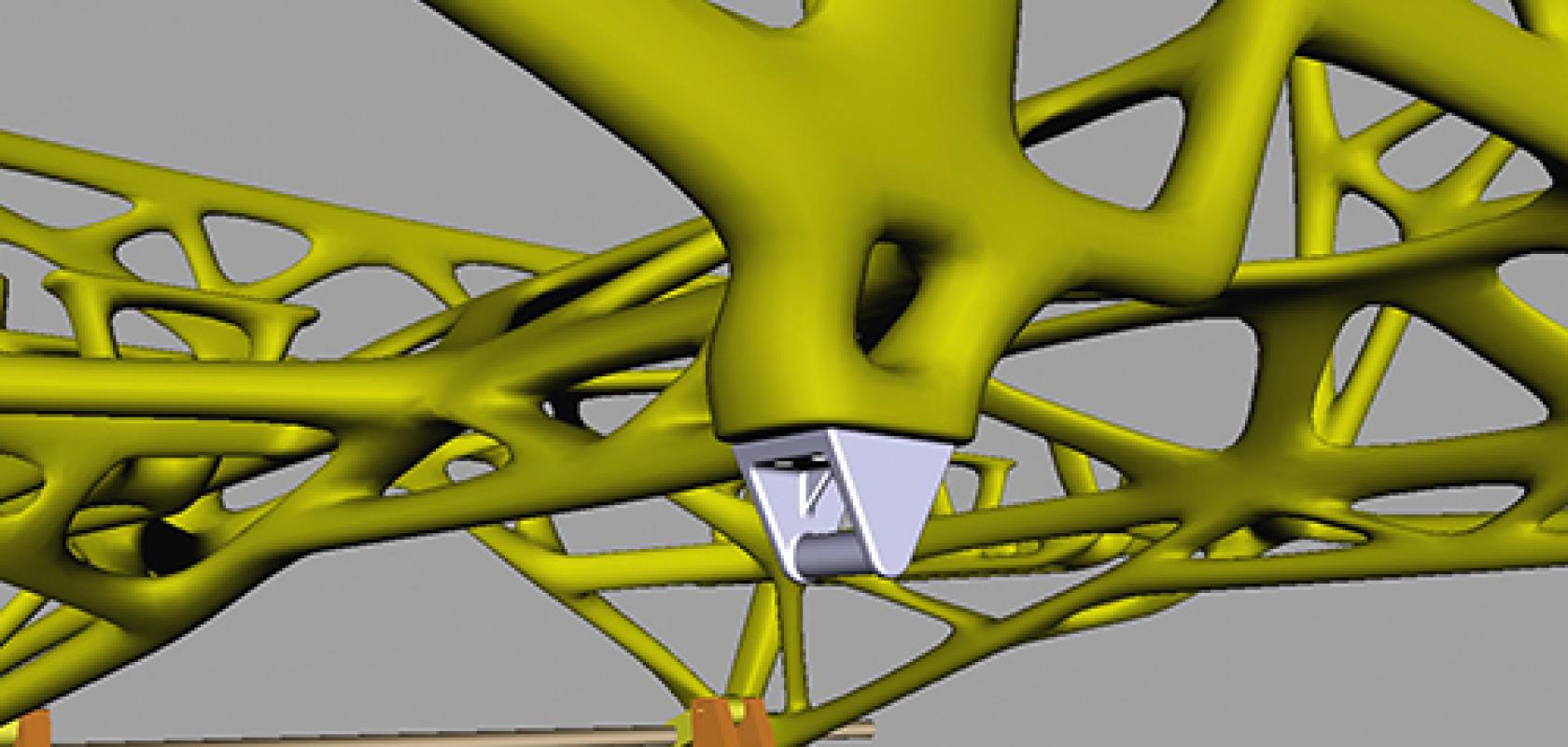The use of simulation software for validation and testing is a well established process for many engineering companies – but advances in software, combined with increased pressure from competition and regulatory requirements, are driving simulation earlier into the design and concept stages of new product development.
Simulation during the design phase of product development gives engineers the ability to adapt and react to problems much earlier. The benefit of this is more reliable validation, reduced costs and development times, and better-performing products.
Bipin Patel, managing director of EnginSoft UK, explains that optimisation is a particularly useful tool for design simulation as it increases the number of product iterations that can be analysed. ‘If you can test lots of scenarios virtually, then you know that you have accounted for any possibility of it failing,’ stated Patel.
He explained that, today, the majority of engineers would not start a new development project without understanding how it is going to perform: ‘Those that are still doing that are probably over engineering. They have put additional safety factors in to compensate for the fact that they don’t actually know what is going to happen.’
Modularisation
Dassault Systèmes, the software provider behind the 3DExperience platform, offers modularisation as a standard out-of-the-box solution as part of its Truck and Bus Tailors industry solution experience. Philippe Delanoye, industry solution experience director, explained that this is similar to software used in transportation and mobility, which provides capabilities to configure an entire vehicle based on modular configurations.
Delanoye commented that this concept aims to reduce the amount of engineering to order (ETO) in order to reduce product development times and costs: ‘ETO is where you engineer many parts based on a customer requirement. This requires you to redo the engineering every time.’
The alternative, configure to order (CTO), allows users to ‘define configurations based on what you have designed on previous projects – allowing users to reduce engineering as they can make use of previous designs or design something new depending on the project requirements, said Delanoye.
‘We configure the vehicle just like when you go and buy a normal vehicle,’ continued Delanoye. ‘Let’s say 80 per cent of what you want is available out of the box through configuration and then you want to add something specific to you as a customer, so there is still the remaining part of ETO.’
Michael Lalande, Dassault Systèmes’ director for Americas transportation and mobility, commented that the reason behind some of the major vehicle manufacturers going to modularisation is that it allows them to re-use material that has already been validated in previous projects: ‘They have already tested and validated that specific model and they just have to assure that, when they plug that module into the new vehicle, it meets the new requirements. In most cases all the components within that module have already been validated.’

Optimising industrial and commercial vehicles
Optimisation is an increasingly popular tool for many engineering projects as it allows engineers to set up performance characteristics, load cases and a limit to the physical dimensions of a part, and the software will optimise the design for the lowest possible weight. This is a tool that is particularly useful in the design phase as it can reduce the weight of some components radically.
EDAG, an independent German-based engineering service provider working for the global automotive industry, has been using simulation since the early 1990s, when the company first established an internal computer aided engineering (CAE) group. Since that time the company has been using Altair software.
Jörg Hülsmann, CAE and Vehicle Safety Manager EDAG, explained that while they use many of the simulation tools provided by Altair, Optistruct topology optimisation is of particular importance because it allows EDAG to optimise products to reduce the weight: ‘Ultimately, this saves costs for our customers.’

However, Hülsmann was keen to point out that EDAG does not only use Optistruct in the serial phase, but also for conceptual design: ‘If we have to develop a new concept for a vehicle, then often we will start with Optistruct to define the main load paths inside of the structure, and also to define the dimension of the load path. Later on we give our input to the design department and they start to create the first parts, while we will go into more detailed simulation.’
Optimisation software has become increasingly important to large-scale simulation projects because it can be used to optimise the weight of a component based on material loads. This allows engineers to use the exact amount of material required to meet their design objectives. ‘This allows you to save money and control the cost of the total vehicle at the end of the project,’ concluded Hülsmann.
EDAG used Altair’s Optistruct topology optimisation software to develop a lightweight structure of a truck cabin and chassis that was manufactured using additive manufacturing (AM).
The combination of additive manufacturing and topology optimisation is a powerful tool for product design, because it frees engineers from many of the design constraints that they would typically face when using more traditional manufacturing methods.
The researchers at EDAG decided to employ the combination of additive manufacturing and topology optimisation to help them understand how the solution would differ from their previous designs. They decided to begin designing the body in white (BIW) of the truck cabin using a combination of additive manufacturing and topology optimisation to explore the lightest possible design that could meet their requirements.
Hülsmann explained that the goal of the project was to understand if they could define and optimise the structure for the overall concept – the total cabin – using additive manufacturing: ‘Would the design be totally different, would it be a normal structure of a cabin?’

EDAG found that, while the structure was similar to the previous designs, they could reduce a significant amount of weight from the cabin structure: ‘It works in a traditional way, that is to say that the previous concept is not completely wrong, but with this combination of optimisation and additive manufacturing can really save money in the development and weight of the cabin,’ stated Hülsmann. ‘However, at the moment, if you look at additive manufacturing it is expensive. That means that at the moment it is not really a solution for the industry in such a way that you would make the entire body in white (BIW) from additive manufacturing.’
As additive manufacturing can be prohibitively expensive for large-scale production, the team opted to take a step back and combine the optimised structure with some 3D printed parts that were supplemented by more traditional castings that were also optimised in Optristruct.
‘At the end it is really the cost,’ said Hülsmann. ‘If you buy a vehicle – a personal car for instance – it is nice for you that the cost will always be the same. However, if you look at the development of vehicles, manufacturers always introduce new features. Someone has to pay for this and one way of doing that is to save money in other areas of the car, such as the construction of the BIW.’
The future of simulation
The popularity and effectiveness of topology optimisation when combined with additive manufacturing is now driving new development in topology optimisation software. Altair’s Warren Diaz, business development manager for OptiStruct, explained that the company is working on improvements such as how to introduce some of the manufacturing constraints introduced by additive manufacturing into Optistruct software.
Diaz explained that additive manufacturing uses ‘small beams that form large network cells’. It is important to ensure that these beams meet a certain length/diameter ratio so they can be printed: ‘That is something that we have already began to include in Optistruct,’ said Diaz.
Diaz also commented on the power of optimisation software when used early in the design phase, as it can help reduce product development time and reduce errors and time-consuming re-designs: ‘You get the greatest flexibility when you apply topology optimisation very early in the design cycle. You have a clean slate and that provides a greater degree of freedom, more flexibility to come up with these unique types of structures.
‘Now the challenge is how you take this technology and apply it where the designs are being generated. In other words, how do we apply this technology very early, which is typically at the design phase?’
Altair has now adapted some of the capabilities found in Optistruct and added them to the design focused toolset SolidThinking Inspire. ‘It is basically running the Optistruct topology optimisation in the background, but we have removed some of the complexity that would be applied by an experienced FEA engineer so that it can be applied during the design phase,’ said Diaz. ‘This allows you to apply this topology technology very early because you are giving it to the hands of the designer.’
‘If you look at the way the industry is going, we're all going towards advanced driver assisted systems, in some cases autonomy’
Dassault Systèmes is also trying to drive more simulation into the design phase of engineering projects. Fabien Letailleur, senior market intelligence specialist at Dassault Systèmes, highlighted the company’s efforts to provide more simulation capabilities within its design tools: ‘If you look at one of our sister brands SolidWorks, they took the SolidWorks interface, something that people are really familiar with, and they added features right there in the interface.’
While some simulation knowledge is still required to interpret the results, Letailleur sees this as an important step as it allows more users to access the power of simulation: ‘One way to look at it is to take an interface that people are familiar with, and add icons that provide simulation capabilities – that is one way of doing things.
‘Another way is to guide users through the set-up of the model. What we have done in some of our products is provide a step-by-step interface with a narrow range of options, you don’t give everything to the user, you give them what they need and then you guide them.’
In addition to engineering better products, industrial and commercial vehicle providers are increasingly looking to integrated systems and autonomous vehicles which require a more integrated approach to systems engineering.
‘As we move forward to autonomous vehicles and electric vehicles, then I think the old ways of approaching design are not going to work,’ stated Patel, of EnginSoft. ‘Engineers are going to have to model the system first, especially for things like hybrid vehicles. They have an electrical element, a battery pack, a small engine – it all needs to be packaged in a different way.’
One way of designing these integrated systems for complex projects is to use MapleSim, a systems engineering tool provided by EnginSoft.
Patel stated that these tools will be crucial to future design projects, so EnginSoft has been investing heavily to develop the technology.
However, in addition to having the tools, it is also important that these projects employ an integrated approach, including design and engineering teams, to provide the best results. ‘You need an integrated approach and you cannot have an integrated approach with isolated tools and departments – this is till going on today in most industries,’ concluded Patel.
Dassault’s Lalande also commented on the increasing importance of software that can help to design autonomous vehicles: ‘If you look at the way that the industry is going – not just cars but trucks and heavy equipment – we are all going towards advanced driver assisted systems, in some cases autonomy.’
Dassault is already working on a number of projects in this area at different levels of autonomy and assisted systems, but Delanoye pointed out that in some areas these technologies are already commercially available.
‘From a pure automotive standpoint everyone wants to be able to simulate that autonomous vehicle, whether it is an excavator or a fleet of trucks in caravan mode down the freeway,’ concluded Lalande.


